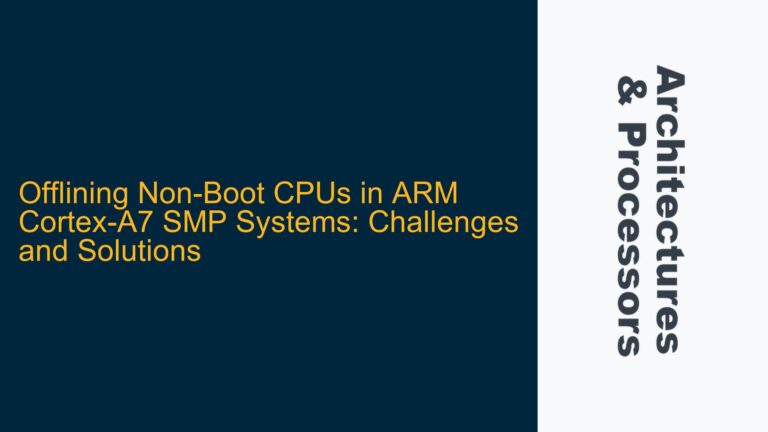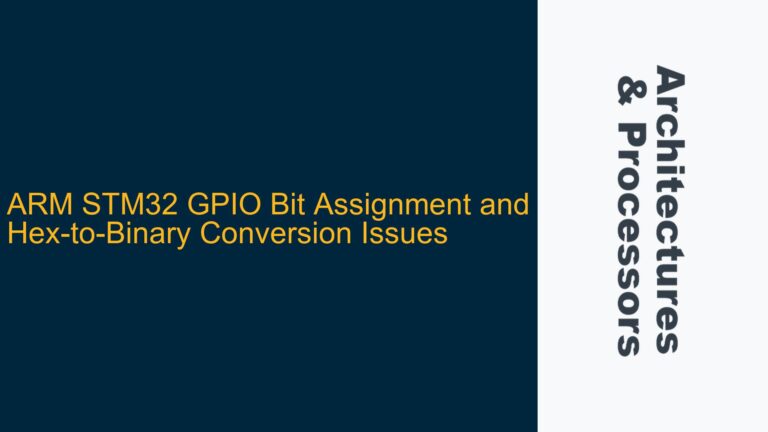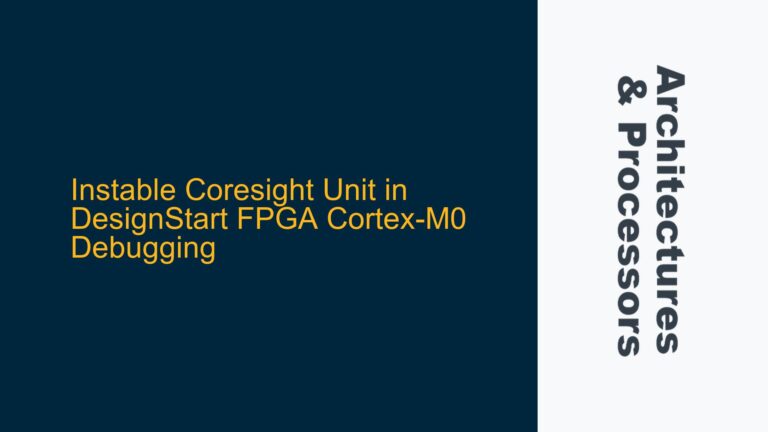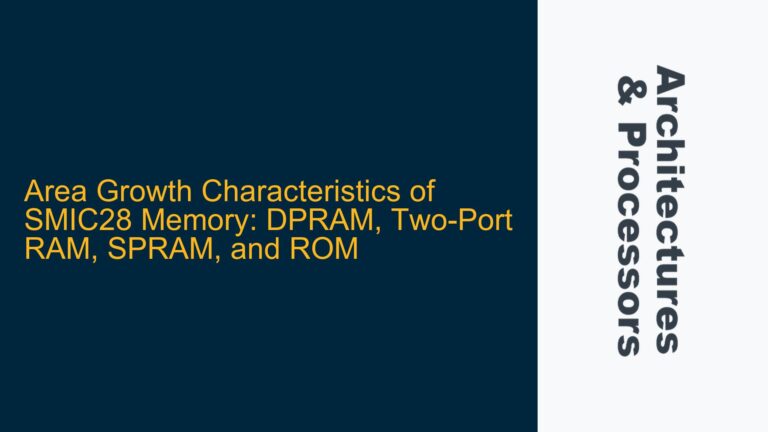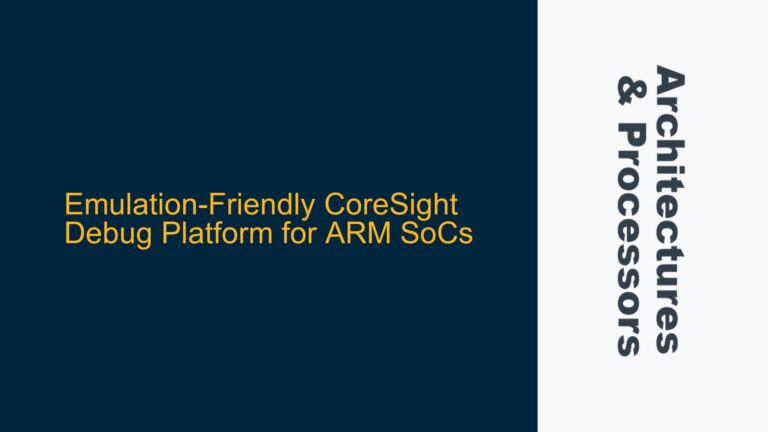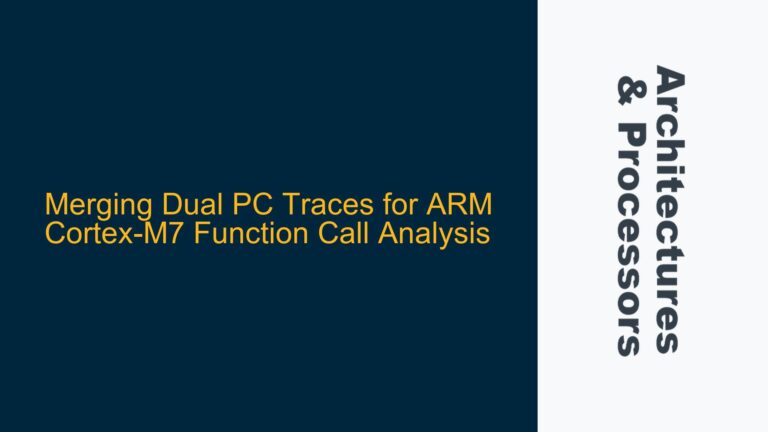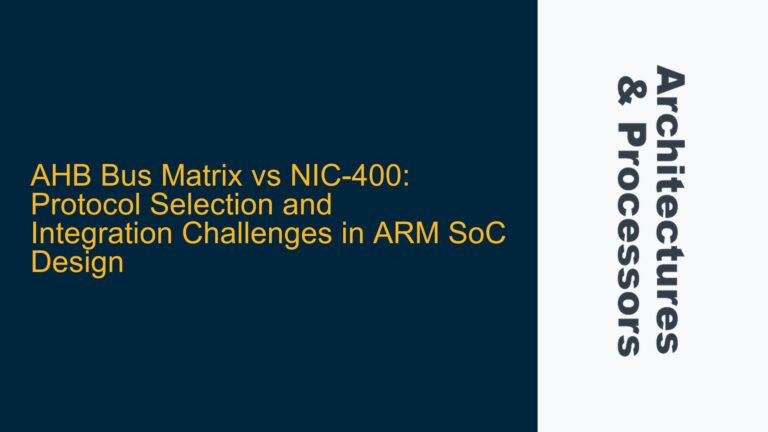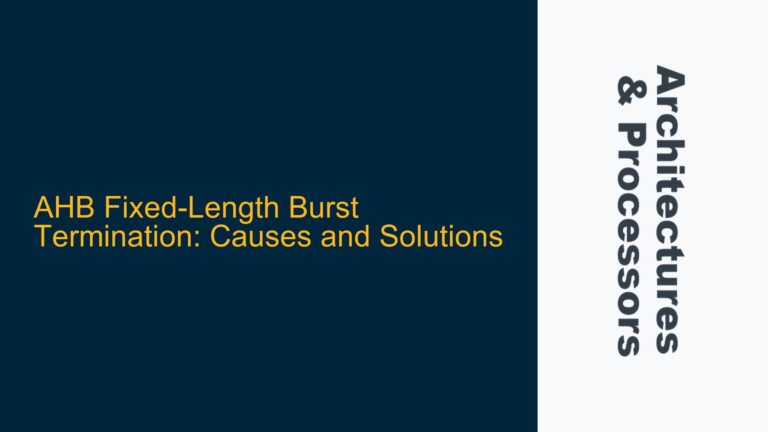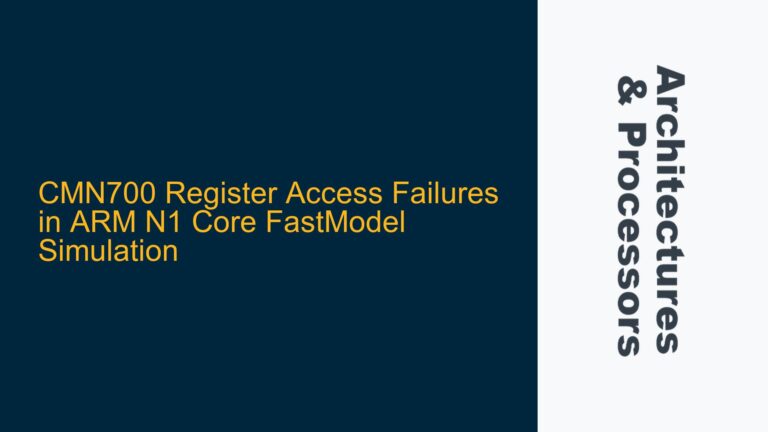Offlining Non-Boot CPUs in ARM Cortex-A7 SMP Systems: Challenges and Solutions
ARM Cortex-A7 SMP CPU0 Boot Dependency and Offlining Constraints In ARM Cortex-A7-based symmetric multiprocessing (SMP) systems running Linux, CPU0 is designated as the boot CPU and is inherently required to remain active throughout the system’s operation. This design choice stems from the architecture’s reliance on CPU0 for critical system tasks, such as interrupt routing, kernel…
